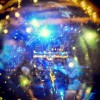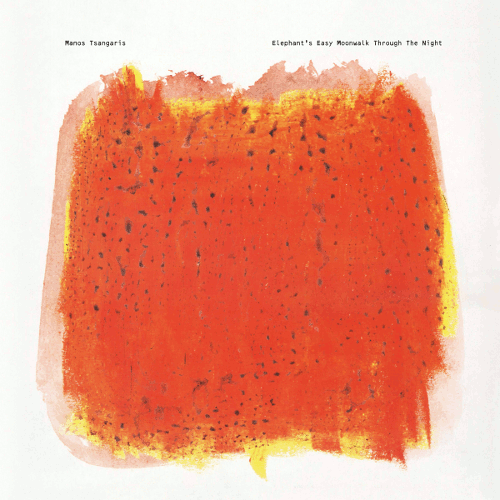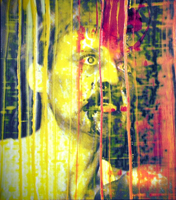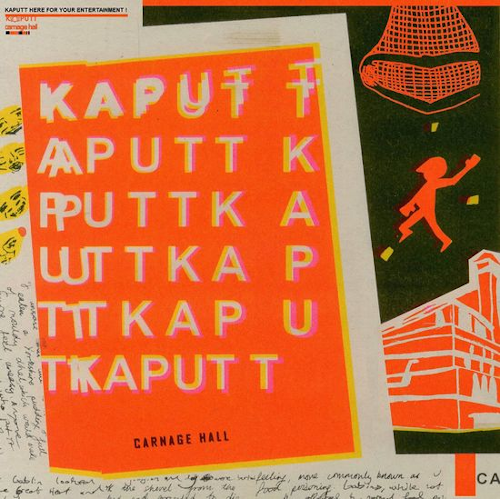Bureau B
 ESB’s album lands on my doorstep at the same time as the first pictures of Pluto filter through the cosmos and are shown for the first time for all humanity to see. Somehow the music created by the trio of Yann Tiersen, Lionel Laquerrière and Thomas Poli is fitting as its soundtrack.
ESB’s album lands on my doorstep at the same time as the first pictures of Pluto filter through the cosmos and are shown for the first time for all humanity to see. Somehow the music created by the trio of Yann Tiersen, Lionel Laquerrière and Thomas Poli is fitting as its soundtrack.
“Market” is the album opener, and it’s full of glistening synths that seem to recreate
Fritz Lang’s
Metropolis in musical form. When the pounding rhythm hits in I’m reminded of
John Foxx’s
Metamatic album. There is a sheen to the music, its tall tower constructions hover around you as your monorail train moves through the landscape. Sci-Fi music? Not quite, as
ESB has more to offer than this. “Spoon” has that wonderful feel that only early
Human League albums offers, the electronic crash of rhythm sending you into that early industrial music age where synths obliterated guitars as the instrument of choice, moving through topography that used to be travelled by
Japan instrumentals. The lead is achingly beautiful, filled with
a wash of strings sounds underneath that help you traverse these landscapes in style.
Sequencing starts ‘The Flashlight”, moving from major to a minor key like a techno
Phillip Glass. As its bass slides in, the track pulses to
a rhythm that’s part disco and part Kraftwerk because of its slight staccato style. A track to read your copy of
André Breton’s
Nadja to while sitting in a café on a rainy night in Paris. “X2” has a slow burning opening as its bass rumbles around a couple of notes while
Tangerine Dream-style floating synth notes hover around a single chord that hangs there. The notes begin to build like droplets, and its here we begin to hear the first stirrings of a
Klaus Schulze Berlin School sound. When the rhythm begins to pick up pace, you are reminded of ’50s sci-fi drawings of immaculate ships heading out into space,
Asimov-style robots and women dressed in futuristic fashions. The piece almost swirls with the engines of flying machines as it builds to its climax.
“Jellyfish” starts with an OMD-sounding drum machine sound whilst the synth plays pure Trans-Europe Express melodies over the top of some choppy rhythmic stabs from the other keyboards. It’s almost an instrumental that Kraftwerk didn’t record, sounding lush and opulent at times with only the stark minimalism of the beat dragging back to the era of futurism and Dada. “Late” starts with a similar feel to that found on some of Vangelis’s Blade Runner soundtrack with a pulsing late-night rhythm. However, as it travels along we get far more experimental electronics: noise buzzes from speaker to speaker, punctuated every now and then by menacing chords, atonal stabs slowly building into a loud crescendo as the track takes flight to look for replicants.
“Kim” starts as a peaceful meditation with an
Affenstunde-era
Popol Vuh feel. Its chords hang in a fairly ambient way, punctuated by the crackling rhythm, reminding me of some of
David Sylvian’s recent instrumental outings, where the almost
calmness of what lies beneath is disturbed by unexpected and disquieting sounds. An oddly serene way to end what is a beautiful-sounding album. I hope there is more to come from the trio.
The future is yours, and now here is your soundtrack to it.
-Gary Parsons-
 ESB’s album lands on my doorstep at the same time as the first pictures of Pluto filter through the cosmos and are shown for the first time for all humanity to see. Somehow the music created by the trio of Yann Tiersen, Lionel Laquerrière and Thomas Poli is fitting as its soundtrack.
ESB’s album lands on my doorstep at the same time as the first pictures of Pluto filter through the cosmos and are shown for the first time for all humanity to see. Somehow the music created by the trio of Yann Tiersen, Lionel Laquerrière and Thomas Poli is fitting as its soundtrack.


